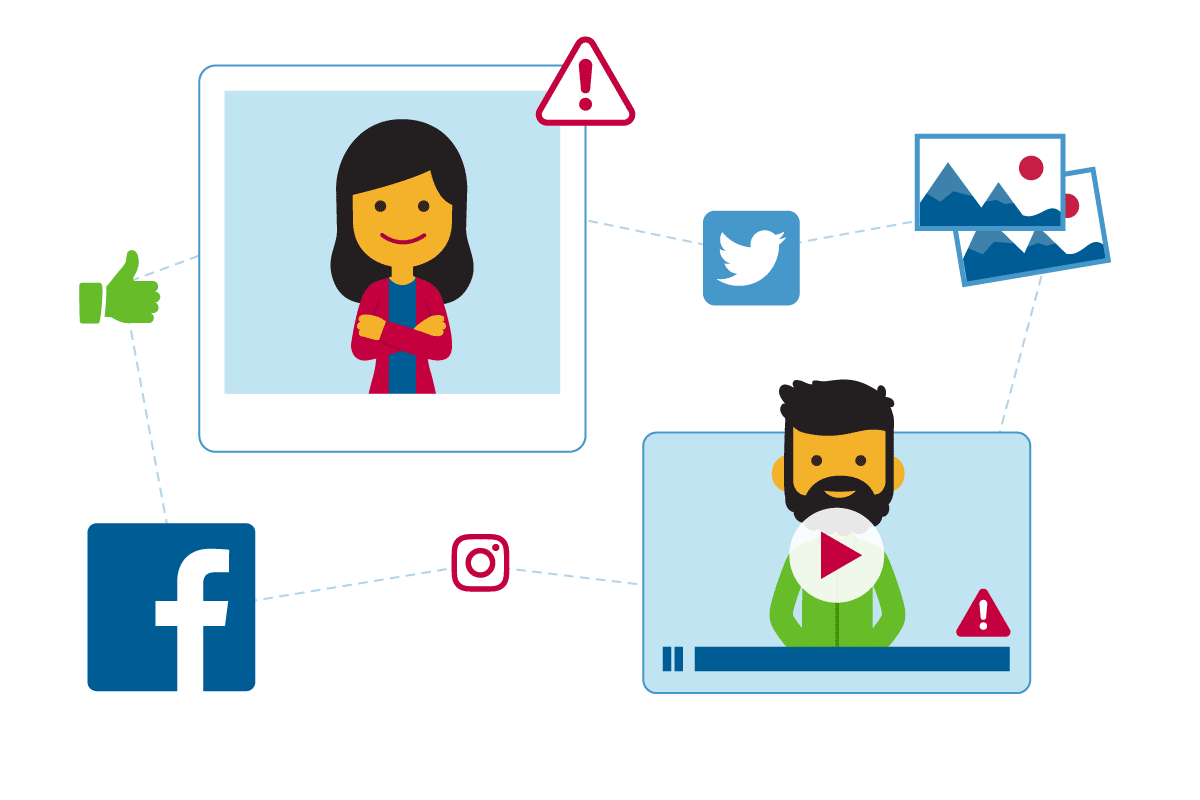What You Need to Know About Using Employees in Company Photos and Videos
Updated

Using your employees in photos and videos—in everything from social posts to annual reports to product demonstration videos—is a great way to show your company’s personality. But using photos or other personal representations of your employees might get you into trouble if you don’t understand the risks and take steps to protect yourself.
Your Right to Your Image
If someone is in a public place without a reasonable expectation of privacy, anyone can take their photo and share it, publish it, or even sell it, as long as it’s not being used to promote a product, service, or cause.
The right of publicity is the right of an individual to control the commercial use of his name, image, likeness, or identity.
However, everyone has a right to protect their name, image, or likeness from being used for the commercial benefit of another person or entity, including on a website, in an advertisement, or in any type of promotional printed or online material.
This right, sometimes referred to as the right of publicity or personality rights, in effect treats the individual’s identity as a protected trademark. Infringing on this right by using a photo, voice, or other likeness without permission can result in a fine, and violators can be sued for actual and punitive damages as well as any profits that result from the use.
Publicity rights are protected at the state level rather than the federal, so be sure to familiarize yourself with the publicity laws of the state in which you do business.
What is Promotional Use?
While technically you do not need permission to use an employee’s name or image for informational or editorial purposes, such as in a newspaper, nonfiction book, documentary film, or informational website, that doesn’t necessarily cover what your company produces.
You might consider the news section of your website to be “news,” your social media pages to be “for fun,” and your educational webinars to be “informational,” but if you are selling any type of product, service, or idea, anything you produce could be considered promotional.
After all, you post fun photos of company events on social media to attract potential hires and put your company in a positive light. Your “informational” blog posts and videos are designed to provide value to your customers and get them to engage with your brand, and hopefully do business with you. Your press releases are designed to draw attention to your company, with the goal of increasing sales.
Getting Consent from Employees for Photo Use
Asking your employees before using photos of them isn’t just a good idea legally, it shows respect and promotes a positive employee-employer relationship. While many employees won’t think twice about having their image used, others might have concerns ranging from simply not liking to be photographed to worries about stalking. Any of these reasons are valid and might lead an employee to decline to be photographed.
If they have not signed a photo release, a former employee can require their previous employer to remove their name and image from all promotional material, including websites, social media, and printed collateral.
Some companies are satisfied with obtaining verbal consent for photo use, but a signed photo release (sometimes called a “model release”) is much preferable. If there is no written release, an employee who quits or is let go has the right to ask their previous employer to remove their name and image from all promotional material, which can result in a lot of aggravation and expense.
A general photo release signed when employment begins may be adequate for photos and videos used casually or internally, but a separate signed release should be obtained every time an employee’s name, voice, photograph, or likeness is used for marketing purposes.
If you want to be able to use the employee’s image with no restrictions, you’ll need to have them sign an unlimited or “blanket” release, which allows you to use the person’s image and name in any way, in any media, anywhere in the universe, for all time. With this type of release, you can use the photo for any type of promotional campaign, or even sell it to another company or a stock photo website. Make sure the employee understands the implications of signing a blanket release, because legally the release is only valid if it is signed voluntarily by a fully informed party.
What to Include in the Photo Release
The photo release should stipulate that the consent is voluntary, and outline what the photo, name, or likeness will be used for, where it will appear, and when.
It should also include a “hold harmless” clause indicating that the employee releases the company from any claims or demands arising from the use of the images, likeness, name, or identity of the employee.
You might want to include additional information, including whether the employee will be allowed to view and/or approve the photo or video before it is used, and whether the consent form automatically becomes invalid upon termination of employment.
Many websites offer downloadable photo release templates. To make sure your release puts you on solid legal ground and covers everything your particular situation requires, consult a lawyer.